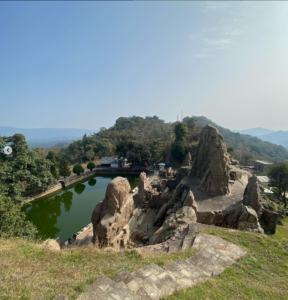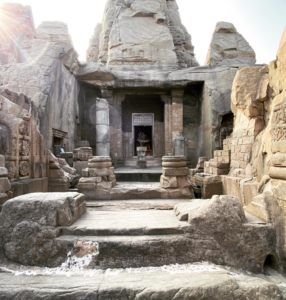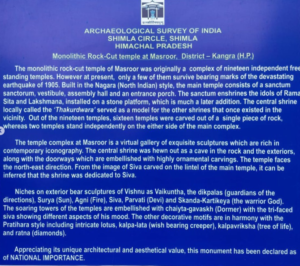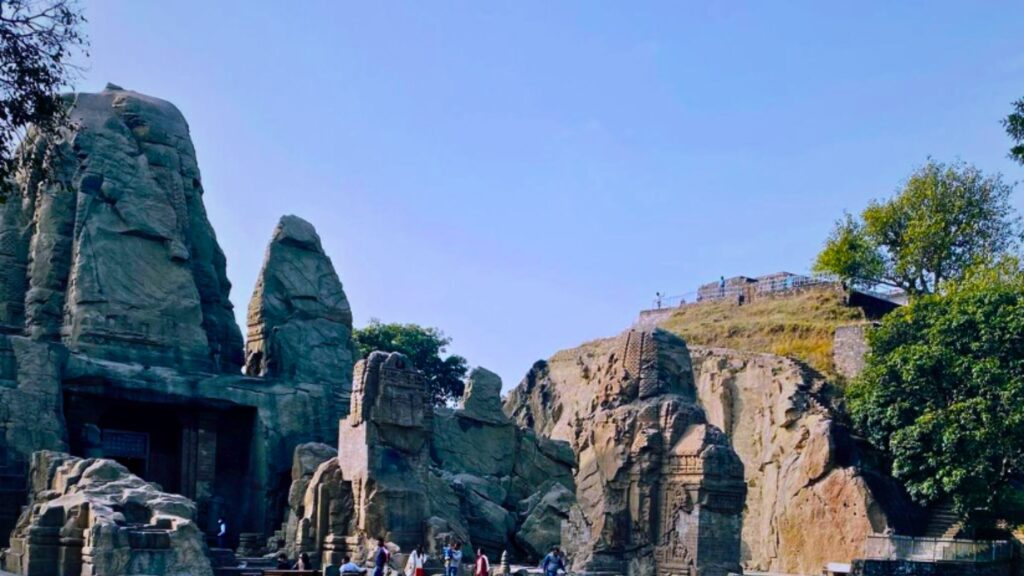Temples are representations of the centuries-old traditions in India. They are spectacles to watch and among the places to explore. In the Kangra district of Himachal Pradesh, there lies a piece of architectural magnificence that stands out and represents the remarkable history of the place—the blog delves into the Masroor Rock Cut Temple.
The Masroor Rock Cut Temple was built in the 8th century by Rashtrakuta King Krishna I. It is believed that originally there were many other temples (16) like the existing one. However, the earthquakes of 1905 in the Kangra Valley destroyed them. Thus, today only the integrated structures are available, symbolising the Hindu faith in the region.

Masroor Rock Cut Temple: An Ancient Relic
Rock-cut figures comprise sculpting a single large stone using tools and craftsmanship. These historical figures are a testament to time and showcase the love and devotion that the ancient people had for their idols. Moreover, the quality of techniques used at the time is truly exceptional considering the numerous natural calamities.

Carved From A Single Rock: Masror Rock Cut Temple
The Hindu temple is devoted to Lord Shiva while its design and similarity to Ellora Caves show the relations of people across the whole region. Such type of architecture is not limited to North India as there are many places where one can find such temples.
Some of the famous ones are below:
- Badami Cave Temples
- Ellora an Ajanta Caves
- Elephanta Caves
- The Pancha Rathas
Historical Importance of Rock Cut Temples
There are not a lot of temples which are left from the past therefore, it’s important to understand the history of places like Rock Cut Temple. Valuing the knowledge of the past is the true wisdom that a person can develop in their life and temples are a time capsule—telling us things which we don’t know about us and our heritage.

A Place to Conserve and Visit
The Masroor Rock Cut Temple is a national heritage, thus it is our duty to preserve this. One of the first responsibilities of people as tourists is to maintain the decorum of the area. That way we can share with the future generations the legacy of our ancestors who worked so hard for making these places. Thus, make sure to visit the place and try to showcase it as you see it.
Conclusion
The Masroor Rock Cut Temple in Himachal Pradesh, built in the 8th century by Rashtrakuta King Krishna I, is an ancient relic of the Hindu faith. Built from a single large stone, it symbolizes the love and devotion of ancient people for their idols. The temple’s historical significance and preservation make it a national heritage, a place to visit and preserve the legacy of its ancestors.
Frequently Ask Question (FAQs)
What is meant by a rock-cut temple?
A rock-cut temple means that the architecture is carved from a single large rock. On top of that, the additional carvings are done with extreme excellence and care.
Which Indian temples are rock-cut?
The following Indian temples are rock-cut:
- Masroor Rock Cut Temple, Kangra
- Amarnath Temple, Kashmir
- Varaha Cave Temples, Tamil Nadu
- Kanheri Caves, Maharashtra
- Badami Cave Temples Karnataka
- Ellora Caves, Maharashtra
- Ajanta Caves, Maharashtra
- Elephanta Caves, Maharashtra
- The Pancha Rathas, Mahabalipuram
Which is the famous rock-cut temple?
Masroor cave temples of Himachal Pradesh are one of the most famous architectural structures in North India.
What is the story of the Masroor rock-cut temple?
The Ellora of Himachal Pradesh often referred to as Rashtrakuta King Krishna I built Rock Cut Temple. Moreover, the temples date back to between the years 756 and 773 AD.
Which is the largest rock-cut temple in India?
Ellora Cave’s, ‘Kailasha’ is one of the largest Rock-Cut temples in India.

